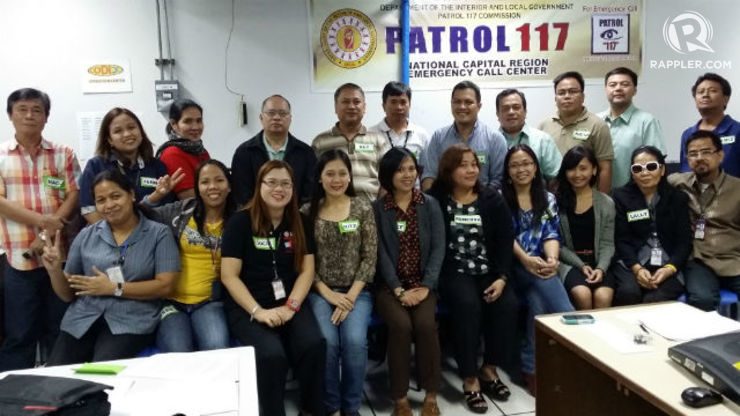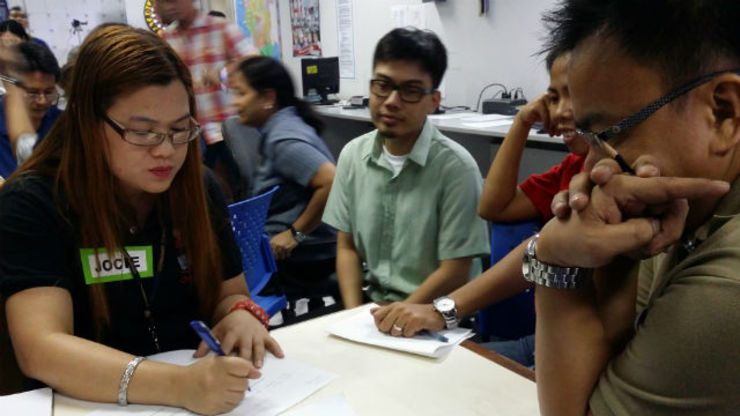SUMMARY
This is AI generated summarization, which may have errors. For context, always refer to the full article.

MANILA, Philippines – On September 21, 2014, a Twitter user alerted @PNPhotline and @MovePH about a person with HIV suffering from pneumonia who needed to be immediately transported to San Lazaro Hospital in Manila.
MovePH, Rappler’s civic engagement arm, alerted the nationwide emergency hotline number 117, facilitating the immediate deployment of an ambulance to transport the patient to the hospital. (READ: Project Agos: Pregnant woman, HIV patient rescued)
@VoltaireTupaz @MovePH @PNPhotline @PDRRMCBulacan the rescue unit of Patrol 117 got there already. Thank you guys for helping us with this!
— Nonoy | Tom (@tomasito153) September 21, 2014
Recognizing the potential of social media in promoting public safety, the Patrol 117 Commission on Tuesday, October 28, organized a workshop for its call center agents on the use of new media in emergencies and disasters. The staff of the Department of the Interior and Local Government’s Central Office Disaster Information Coordinating Center (CODIX) also attended the training.
“This training is a unique experience for us. This is our first time to attend a training on social media. Now that we have this, our communication with the public, in times of disaster, is expected to be faster,” 117 development management officer Jocelyn Villaflor said.
Both Patrol 117 and CODIX heavily rely on traditional communication media, such as telephones and short message service (SMS), in gathering and reporting disaster-related information.
Faster flow of information
The introduction of social media as another tool in managing disaster information will help promote civic consciousness and confidence in institutions, CODIX Director Allan Tabell said.
“During a disaster, a crisis or an emergency, people go online to search for the latest emergency information,” Tabell said.
However, Tabell admitted there is a lack of established crisis management workflows between national agencies, local government units (LGUs), and first responders, especially during disasters.
“This is a gap social media can fill,” according to Tabell.

Project Agos
Conducted by MovePH, the training familiarized participants with social networks and how these can be tapped before, during, and after disasters using Project Agos.
Project Agos is a platform that combines top down government action with bottom up citizen involvement to help communities adapt to climate change, and become better prepared for disaster mitigation, response, and recovery. (Read: #ProjectAgos: One-stop shop for climate change)
The project has 3 components that aim to harness technology in disseminating critical disaster information:
- PREPARE – Weather alerts, climate change and disaster stories, practical tips, case studies on best practices, hazard and risk maps
- RESPOND – Disaster Information Map (reports of public infrastructure damage, flood, rescue needs, relief needs); partners are given access to running list of incidents
- RECOVER – Stories of resiliency and recovery and best practices
Villaflor said Project Agos’ disaster information map will particularly complement the reports received by CODIX and Patrol 117.
“It will be easier for us to verify reports and send responders on the ground since the location are already plotted on the map. Our communication lines will hopefully improve,” she added.
With the support of the Australian Government’s Department of Foreign Affairs and Trade (DFAT), Rappler is set to conduct similar trainings in various vulnerable LGUs across the country, starting off with the National Capital Region on November 17. – David Lozada/ Rappler.com
Add a comment
How does this make you feel?
There are no comments yet. Add your comment to start the conversation.